Resources
Newsletter
Stay up to date and with the latest news, projects, deals and features.
Subscribe
High profile architects and students have been selected in the mix of six pattern book design winners to create templates for housing delivery in New South Wales.
The jury chose five professional and one student winner across the two categories of terrace housing and mid-rise housing.
There were more than 200 entries from Australia and internationally and the six winners were selected from a shortlisted 21 entries.
The key criteria included adaptability, sustainability, diversity of housing and affordability.
At the time it was announced in July, planning minister Paul Scully said it was hoped that establishing a pattern book would speed up the planning and building processes.
“Our planning reforms to low and mid-rise housing are fundamental to the pattern book competition and will provide diversity of housing for our diverse community,” Scully said.
“Anyone who uses one of the pre-approved designs will have access to a faster development assessment pathway which will save builders, developers and homeowners time and money.”
The winners in the professional category will now work with Government Architect NSW to refine their designs and ensure they meet required standards for inclusion in the NSW Housing Pattern Book.
The pattern book will be available for use in mid-to-late 2025, according to the state.
They will also have the chance to have their designs brought to life and built on a selection of five NSW government-owned sites from Homes NSW, Landcom and Sydney Olympic Park Authority.
The six were chose from a shortlist of 21 entries from the 212 entries received from Australia and around the world.
The winners were Officer Woods Architects; Housing is a Verb consortium which includes Other Architects, NMBW Architecture Studio and TARN; Andrew Burges Architects; Neeson Murcutt Neille, Finding Infinity and Monash Urban Lab; and Spacecraft Architects, as well as the student winners In Common Studio.
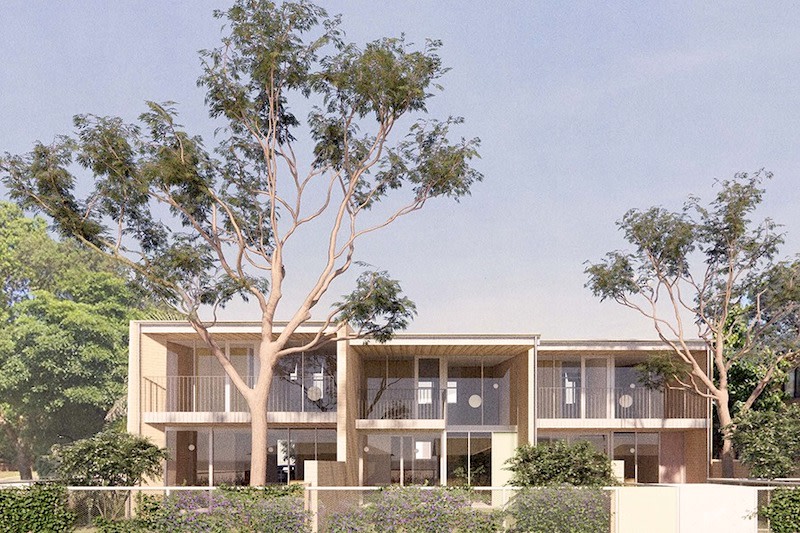
Terrace design winners
Officer Wood Architects’ design features a community of north-facing terrace houses surrounded by greenery and filled with sunlight and fresh air.
The design has a double-height space above the living area that can be adapted to add a bedroom, study, or extra living space on the first floor.
The design reflects suburban life, featuring areas for connection, but also for privacy, pets, and everyday activities. The design connects indoor and outdoor living spaces, integrating the homes with nature.
Created with simplicity and cost-effectiveness in mind, this compact, low-tech design uses local materials and trades.
Why they won
The design is fresh, simple, and cost-effective. It can be customised to suit multi-generational families and different living situations.
It offers great use of space and high ceilings, even in narrow terrace homes.
The design features homes with good access to sun in winter, shade in summer and are well ventilated. They are a great sustainable housing option, and can help lower energy bills.
It is a design that will replicate well on future sites.
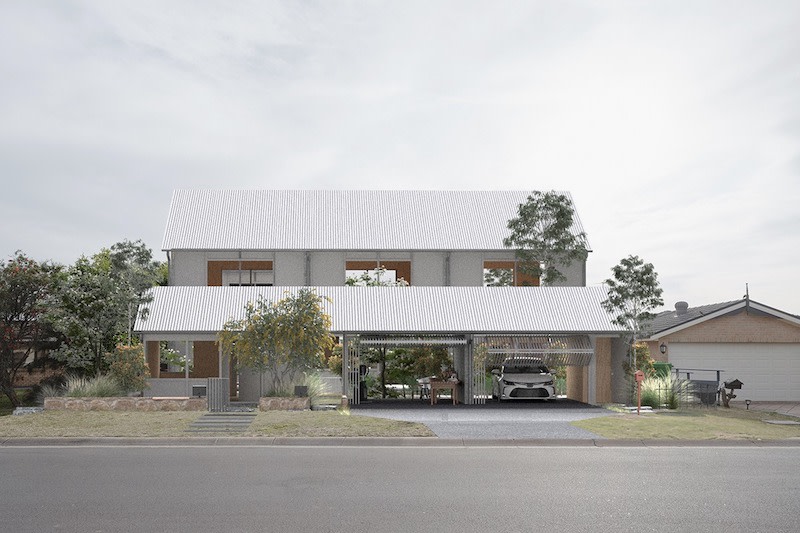
Terrace design winners – Other Architects, NMBW Architecture Studio and TARN
The design reimagines terrace housing as a flexible, modular set-up with multiple options for internal room planning to suit personal preferences.
It starts with a basic home that can be expanded with extra floors or separate buildings as needed and as budget allows. Outdoor areas are a top priority, featuring plenty of sunlight, fresh air and green spaces.
The design shows how terrace housing can be easily adapted for diverse households.
Why they won
A flexible design that starts with a basic home. The home can be customised easily to add additional height, or separate structures, as budget and family needs allow.
The design supports multiple room planning options to suit personal preferences and needs.
It uses simple forms and materials, suitable for common and accessible building methods.
Emphasises sunlight, shade, ventilation, and sustainability.
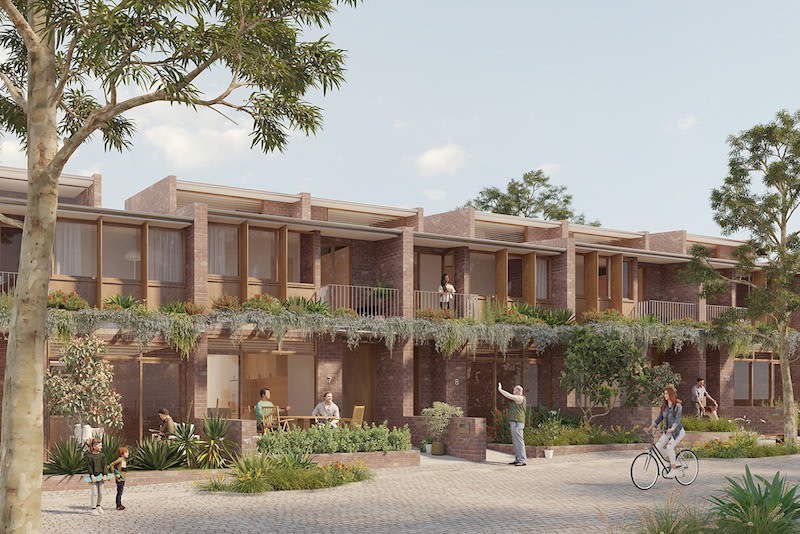
Terrace design winners (student category) – Madeleine Gallagher, Poppy Brown, Kangyun Kim, Paris Perry, John Suh and Catherine Taylor
The design features a dual-frontage terrace house, incorporating a flexible granny flat for future renovations.
It supports multi-generational living and allows people to stay in their homes as they age. The open-plan ground floors connect families while the upper floors create a variety of flexible, private spaces.
The landscaped roofs and courtyards integrate nature and become spaces for recreation. Sliding doors in the courtyards blend private and public spaces, encouraging neighbourhood interaction.
Why they won
Well planned homes bring light and volume into the centre of the terrace. The design includes ‘flex rooms’ on the first level that can be a study, small bedroom or space to work from home.
An optional granny flat supports multigenerational living.
The design is flexible to create a third storey in the roof structure, dependant on changing needs.
The terraces present a beautiful and timeless design to the street.
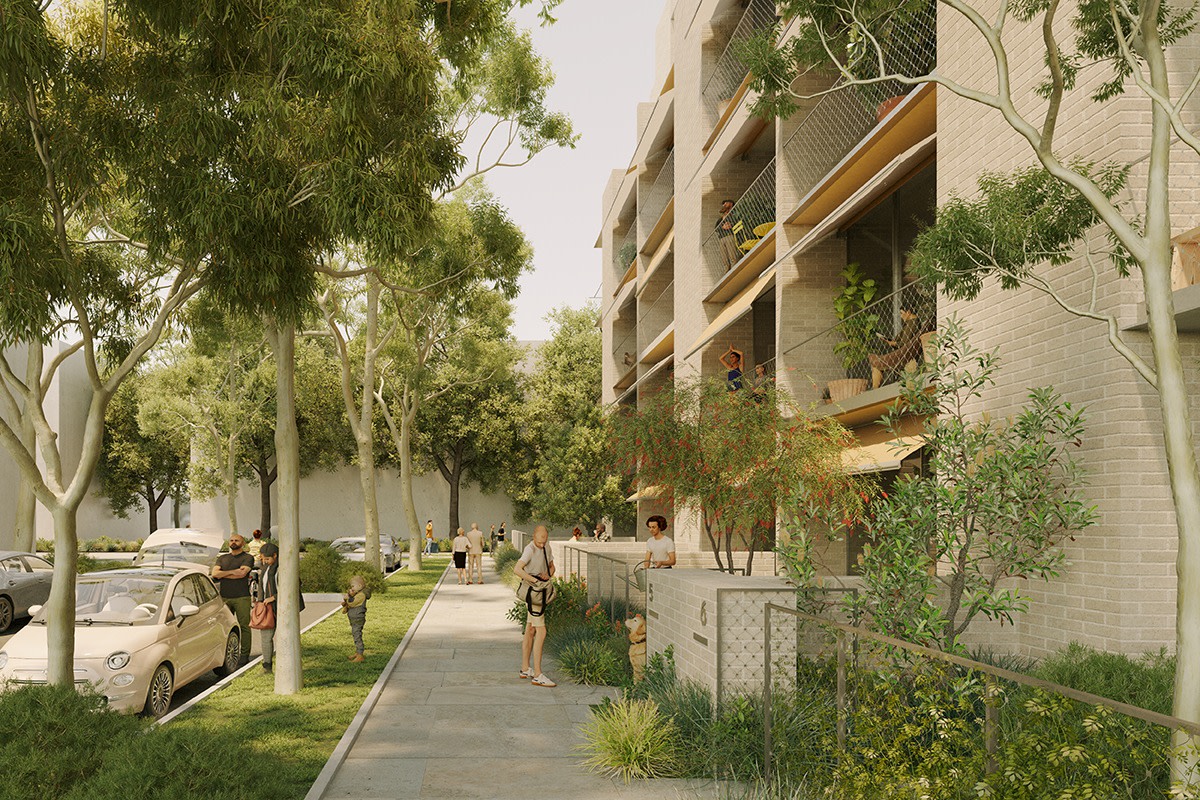
Mid-rise apartment winners
Andrew Burges Architects’ design offers a clever mix of house and apartment living.
The two-storey apartments provide living and kitchen areas on one floor, with the privacy of bedrooms on another. It aims to integrate higher-density housing into existing neighbourhoods using a terrace house model with individual gardens and private entries from the street. The design offers many different options, with single-level apartments at the corners of the building.
The design promotes social interaction with neighbours through small clusters of apartments that offer shared spaces, from ground-level to rooftop gardens. It also focuses on sustainability and considers energy efficiency. The apartments include passive design elements, which means they promote natural light, cooling, and heating.
Why they won
The design combines features of a house and apartment through the inclusion of two-storey terrace house-style apartments.
Open hallways to apartments provide views of the central garden and reduces the cost for lifts.
Apartment configurations are designed for sustainability with sunlight exposure, shade, and ventilation. This reduces energy bills and makes them great places to live.
The apartment building has a residential character, using cost-effective, robust materials with refined details.
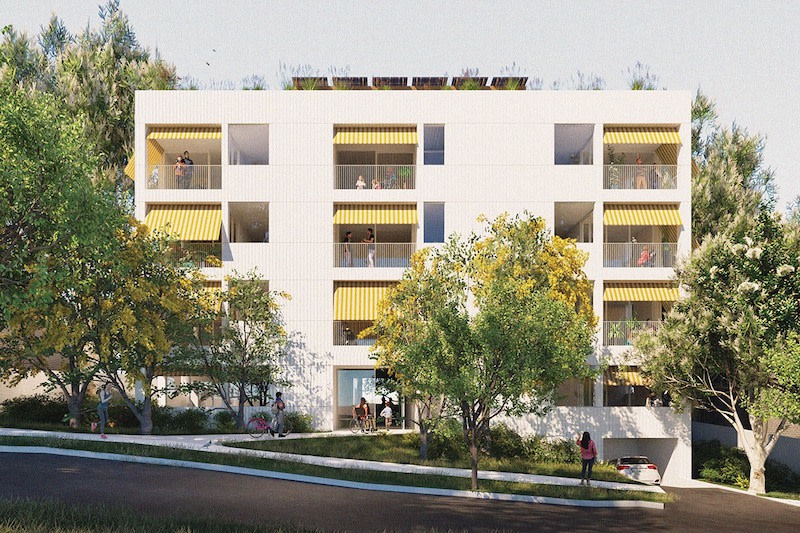
Mid-rise apartment winners
The design encompasses a variety of apartment types suitable for a diverse range of households.
Each apartment benefits from cross-ventilation and generous storage. The shared hallways on each level are covered but open, offering ample airflow and easy access to outdoor areas.
The design integrates both communal and private gardens, highlighted by a landscaped rooftop on level 5 that features solar panels. By aligning the basement and ground floor, the design maximises deep soil areas, which improves water filtration and promotes biodiversity.
The common area has open views in all directions, while two apartments have private gardens. The street-facing roof includes a garden, barbecue area, and communal table to create a community feel.
Durable materials give it a lasting character, and bright awnings add charm.
Why they won
All apartments have two exterior frontages with windows on both sides allowing better light and air circulation.
Efficient apartment design with affordable open hallways to the front doors, offering views of the gardens.
The size and scale of the building is respectful and neighbourly.
The design will adapt well to different site sizes.
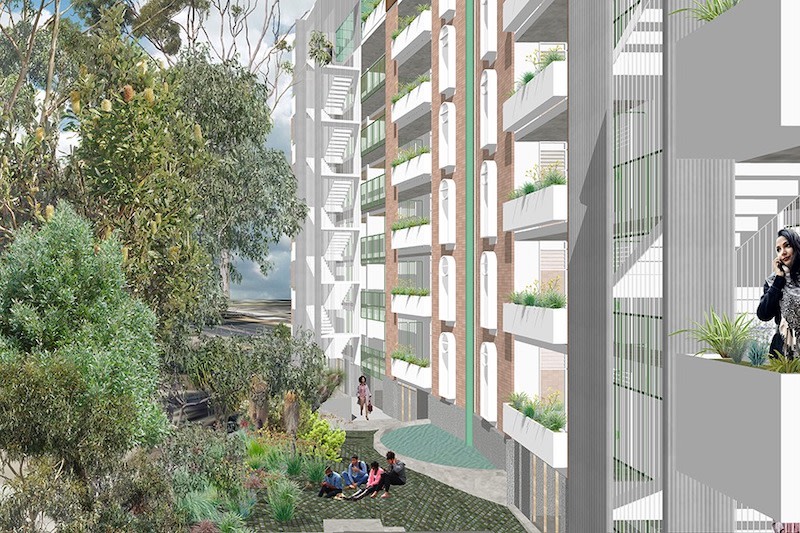
Mid-rise apartment winners
Spacecraft Architects’ design creates spacious, open apartments with a strong connection to the outdoors.
Wide-aspect apartments will give residents greater sense of space, and there are a variety of different household configurations on every floor.
Roof overhangs wrap around the long sides of the building. Overhangs are a design feature that help keep the building cool and create shaded areas for people to sit or walk. There are ground-level gardens and rooftop social spaces, including a laundry and kitchen gardens.
The design creates a neighbourhood feel with varying privacy levels and shared spaces for social interaction.
Why they won
Apartments plans are wide and spacious offering versatile living areas and balconies with excellent access to natural light and fresh air.
Each apartment has a front porch, similar to a house.
The design has a simple modular approach making the building of these homes very adaptable and cost-effective.
The design thoughtfully balances public and private spaces.